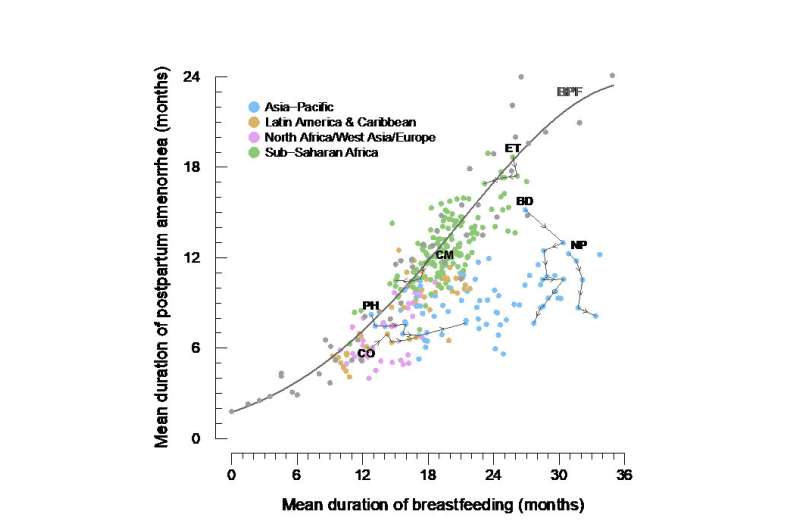Home » Health News »
The contraceptive effect of breastfeeding decreases with socio-economic development

While temporary sterility after childbirth lasts on average only a few weeks for a woman who does not breastfeed, it can last for months, or even more than a year, for one who does. But it was unclear how this contraceptive effect of breastfeeding is affected by a mother’s ‘energetic status’ – that includes her nutrition and levels of physical activity. Researchers from the Max Planck Institute for Demographic Research in Germany and the CNRS in France have just shown for the first time on a global scale that the effect of breastfeeding on ovarian function is highly dependent on environmental conditions.
Analyzing 2.7 million births in 84 developing countries over the past 45 years, the scientists found that the link between breastfeeding duration and average duration of postpartum amenorrhoea (the absence of menstruation following childbirth, and the most visible sign of suppressed ovarian function) was much weaker than that observed in the 1960s-1970s. This shows that the contraceptive effect of breastfeeding has clearly declined in recent years in these 84 countries.
This decrease was also observed directly within the period of study (1975-2019). Furthermore, characteristics such as a high value of the human development index or access to electricity were associated with a reduced contraceptive effect of breastfeeding. This means that for the same duration of breastfeeding, the more developed the country, the lower the period of temporary sterility following childbirth. These results confirm the findings of field studies conducted in recent decades by reproductive ecology specialists. They are also a call to demographers to abandon the notion that environmental conditions can be neglected in the study of fertility.
Source: Read Full Article



